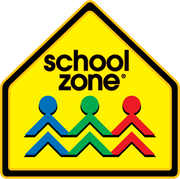Whether hosting or guesting, staying home or hitting the road, holidays can get crazy busy. In the run-up to Turkey Day, gather ways to learn and play on the fly. Or with just a little planning.
Holiday kitchens are learning labs
Cooking, crafting, and creating concoctions with the whole family can build important skills but also produce big giggles and lifetime stories and memories. Reading, measuring, dividing and multiplying recipes are great ways to help kids preschool through middle school practice math and language skills. A couple years ago Forkly posted "Top Thanksgiving Recipes Kids Can Help Make." The offerings include Pumpkin Rice Krispie Treats, Chocolate Turtle Apple Slices, and Slow Cooker Cranberry Meatballs.
Reading, measuring, dividing and multiplying recipes are great ways to help kids preschool through middle school practice math and language skills. A couple years ago Forkly posted "Top Thanksgiving Recipes Kids Can Help Make." The offerings include Pumpkin Rice Krispie Treats, Chocolate Turtle Apple Slices, and Slow Cooker Cranberry Meatballs.
The kitchen is also the perfect place for some sensory-rich science; for example, what kid doesn't love slime? Sugar Spice and Glitter has a short video for making edible, glue-free cranberry slime using just two ingredients (cranberry sauce and cornstarch). And yes, it's kinda' messy but doesn't stick to clothing!
We Are Teachers' "Thanksgiving Science: 6 Experiments You Can Do with Food," compiled by Erin Bittman, includes Dancing Dried Cranberries. Toss dried cranberries into a glass of Sprite, and kids can explore the 3 states of matter by making the cranberries "dance."
Game on: play trivia and make stuff

How do turkeys make their "gobble, gobble" sound? (Think "wind instrument" in band.) Go to Mama Smiles "Turkey Gobble Thanksgiving Science for Kids," which tells us that only male turkeys gobble, and "'gobble' is only one of thirty different calls that turkeys can produce."
For more fun facts, check out Good Housekeeping's "35 Fun Thanksgiving Trivia Facts to Quiz Yours Friends and Family on During Turkey Day," compiled by Taylor Murphy, Yaa Bofah, and Annie O'Sullivan. Questions range from "What town canceled Thanksgiving because they couldn't make pumpkin pies"? to "What food did the colonists and Native Americans not have at the first Thanksgiving?" to "What do Thanksgiving and the song 'Mary Had a Little Lamb' have in common?"
Good Housekeeping also offers up "55 Easy Thanksgiving Crafts for Kids of All Ages." They include cute little pumpkin stress balls made out of orange balloons, leaf people and leaf painting, turkey marshmallow lollipops, bedazzled gourds, and turkey windsocks.

What looks like "making a mess" can actually help little ones' skills grow. The Early Learning Ideas blog posted "The Best Thanksgiving Activities for Preschoolers." Among them are Thanksgiving Paper Tearing Activities that build hand strength and fine motor skills.
For road trips and airports, consider packing a 320-page Big Preschool Workbook, Big Kindergarten Workbook, or Big First Grade Workbook or a BOGO by pairing Big Preschool with Fun & Games Workbook. The "Big" workbooks build skills across the curriculum and their perforated pages make easy individual worksheets.

Giving thanks reaps (lots of) rewards
In the frenzy of travel and festivities, take a pause from time to time to reflect on the holiday and help kids do the same. The payoff is big. We know that a grateful heart—an attitude of gratitude—feels good. But Misty Pratt, writing for Mindful, in a piece titled "The Science of Gratitude," notes that "In the past two decades, a growing body of evidence in the field of social science has found that gratitude has measurable benefits for just about every area of our lives."



Citing sources such as the books, The Gratitude Project: How the Science of Thankfulness Can Rewire Our Brains for Resilience, Optimism, and the Greater Good and The Thank-You Project: Cultivating Happiness One Letter of Gratitude at a Time, Pratt says that "Gratitude helps you see the bigger picture and become more resilient in the face of adversity."
According to the article, gratitude also leads to elevated mood, healthier habits, and stronger social connections.
In Very Well Family's "10 Ways to Teach Your Kids Gratitude This Thanksgiving," some of Wendy Wisner's suggestions include putting together care packages, donating to charity, writing thank-you notes (librarian? teachers? grandparents?) or making a gratitude jar or a gratitude "tree" with Post-it leaves that list what we're grateful for.

Like electricity, gratitude travels a circuit from giver to receiver. A simple "thank you" can make people feel recognized, appreciated, and/or loved.
After all, that is what the holiday season is all about.











